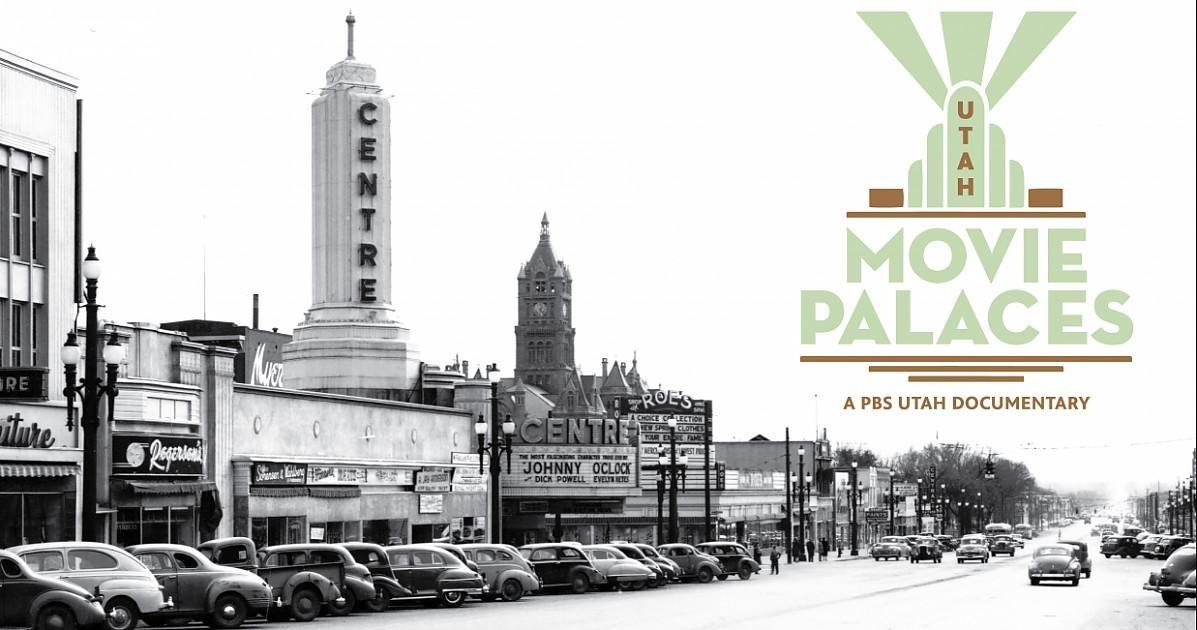
Utah Movie Palaces
For over one hundred years, motion pictures have captured the imagination of audiences across the United States. In the beginning, it wasn’t just the spectacle of the silver screen that inspired Americans; it was the theater itself. Initially shown in stage venues that hosted vaudeville and other live entertainment acts, motion pictures became so popular that by the late teens and early 1920s, studios and entrepreneurs raced to construct more and more extravagant theaters in which to showcase their craft, and outdo each other along the way. What emerged from this competition was a new kind of theater called the Movie Palace.
In Utah Movie Palaces, PBS Utah takes viewers on a historical road trip to theaters large and small across the state. It begins in the first decades of the 20th Century, when towns such as Gunnison and Ogden opened ornate theaters complete with elaborately decorated facades and imposing organs to accompany silent film productions, their distinctive décor designed to transport enthralled theater-goers into a time and place entirely different from their own.
Watch Preview
As the century progressed, other theaters kept up with Hollywood’s expanding cinema experience. In Salt Lake City, national media mogul Alexander Pantages officially opened his 31st theater on Main Street on December 1, 1920. A few blocks away, the new art-deco style influenced the 1,600 seat Centre Theatre on the corner of State and Broadway. Then, in 1949, suburban Salt Lake City enjoyed the opening of another movie palace. Thirty blocks south of the city center, on Highland Drive, The Villa beckoned passersby with a 32 foot high sign containing 2,000 pulsating lights and 1,400 feet of fluorescent tubing. The Villa’s large size allowed the installation of a new projection format called Cinerama, which used three projectors to create a massive image on a concave screen.
When new technology allowed the same wide image to be placed on a single 70mm negative, it was installed at the Cinedome 70 in Riverdale, Utah. The Cinedome 70 was a family business run by Darrell Tullis and Ray Hansen and their families. When Darrell and Ray were tragically killed in an airplane accident in 1975, Nancy Tullis, Darrell’s wife, took over operation of the Cinedome and made it a centerpiece of the community for the next 25 years.
There's a feeling in this room when you come in. You realize that it's not just this moment that you're walking into. You're walking into years of history. – Lori Nay, Mayor, Gunnison, Utah
Utah Movie Palaces shares the experiences of those who worked in and attended these cherished Utah theaters over the years. Gary E. Bowles, a former movie palace employee, said of the theater experience, "we offered to the people extremely inexpensive entertainment. We opened the doors at ten and closed them at midnight and most Fridays and Saturdays we were full, completely full. It was the meeting place of the city. I think we provided an entertainment outlet that they couldn't get elsewhere.”
Van Summerill, a retired theater projectionist, remembers children lined up around Ogden’s Egyptian Theater each Saturday morning for a children’s matinee show complete with cartoons and prizes. “There was always a bicycle center stage and that was given by the number on your ticket stub,” said Summerill, “and I was such a shy kid, I was terrified they were going to call my number. And I'd have to get up in front of all those people and that. So I’d break out in a cold sweat. And I wasn't smart enough to think that well, I'd be the only one that knew it was my number!”
“Movie theaters come with so much old memories” says Hamid Adib, owner of the Salt Lake Villa Theatre, now the home of Adib’s Rug Gallery. “Memories of myself and memories of others. So those you cannot put a price on.”
For generations, Utah audiences have found escape in the local movie palace, becoming lost in what has been called “an acre of seats in a garden of dreams.” It’s an institution that has left no small impact on our society — as a place of wonder and entertainment, a cornerstone of the community, and a source of fond memories. So sit back, relax, and enjoy the show.

.jpg)
.jpg)